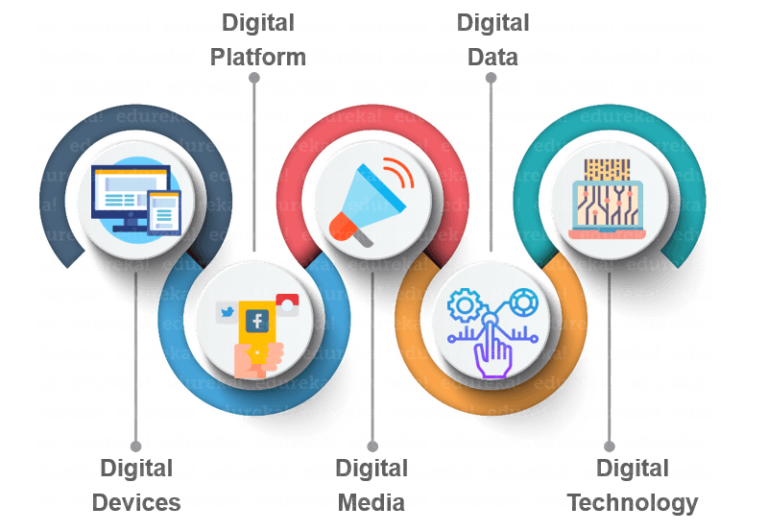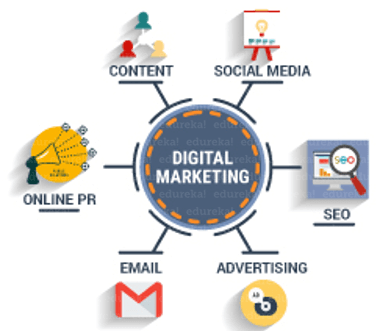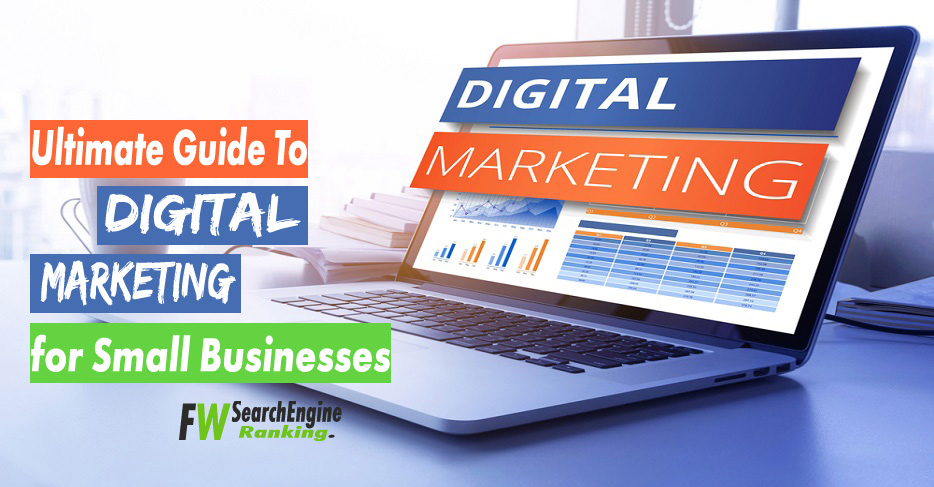There is a big difference between surviving and thriving, and as a business owner, you may already be familiar with this. But do you know the role of digital marketing in your business? In today’s world, where the Internet is intertwined with everything we do, the importance of digital marketing has become evident. It has become an integral part of what the business means to its customers.
What Is Digital Marketing?
Digital marketing encompasses all marketing efforts that promote your product or brand using electronic devices or the Internet. Use online marketing tactics such as search marketing, email marketing, social media marketing, and mobile marketing to connect with current and potential customers.
Now that you understand what digital marketing is, let’s take a look at the 5D of digital marketing.
The 5Ds of Digital Marketing
The 5D in Digital Marketing defines the opportunities for consumers to interact with brands and for companies to reach their audience in different ways. The 5Ds of digital marketing are:

Digital devices: Your target audience experiences its brands as they interact with sites through digital devices, including cell phones, desktops, tablets, televisions, and gaming devices.
Digital platforms: most interactions on digital devices occur through a browser or applications from the main platforms, such as Google, Facebook, Instagram, YouTube, Twitter, and LinkedIn.
Digital media: different communication channels, paid and earned to reach your audience and interact with it.
Digital data: information that companies collect about their audience and their interaction with companies.
Digital technology: companies use it to create interactive experiences for websites and apps for in-store kiosks and email campaigns.
Why Digital Marketing?
Although traditional marketing may exist in print ads, telephone communication or physical marketing, digital marketing is done electronically and online. This means that there are countless possibilities for brands, which include video, email, social networks or website-based marketing opportunities.
Since digital marketing has so many options and associated strategies, you can be creative and experiment with a variety of marketing campaigns. With digital marketing, you can also use analysis tools to monitor the success and ROI of your campaigns.
How Digital Marketing Work?
Digital marketing is no different than traditional marketing. Both require that intelligent organizations develop mutually beneficial relationships with customers and clients. However, digital marketing has replaced more traditional marketing tactics, as it was designed to reach today’s consumers.
Think about the last important purchase you made. Before buying, you would probably have searched the Internet to find out the product you wanted and what your best options were. And your final purchase decision would have been based on customer reviews, features, and prices.
Purchase decisions start online today. Therefore, an online presence is absolutely necessary, regardless of what you sell.
You must create a marketing strategy that put you in places where your followers are already and connects you with them in several ways, such as:
- Provide content to keep them updated with industry news.
- Social networks share this content and relate to the public as friends and followers.
- Search engine optimization optimizes your content to appear when someone searches for the information you have written about.
- Advertising generates paid traffic to your website, where people can find their offers
- Email marketing tracks your target audience to ensure they continue to get the solutions they are looking for.
By joining all these pieces, you get an efficient and easy to operate Digital Marketing machine. Although it seems intimidating to build this machine from scratch, it is as simple as learning and integrating a digital marketing tactic at once.
Marketing Channels In Digital Marketing

#1. Search Engine Optimization
SEO is the process of optimizing the content, technical configuration and scope of your website so that your pages appear at the top of the search engine result for specific keywords. The ultimate goal is to attract visitors to your website when they search for products or services related to your business.
SEO reinforces the need for an easy-to-use website, valuable and attractive content and credibility for other websites and visitors to recommend by linking it to your website or tagging it in your social media posts. There are several ways to approach SEO to generate traffic to your website. These include:
- On-Page SEO: it focuses on the content that exists “on the page” on a website. When searching for keywords for the volume and intention (or meaning) of the research, you can answer questions from readers and get a higher ranking on the SERPs (search engine results pages) that produce these questions.
- Off-page SEO: focuses on all activities that occur “off-page” when optimizing your site. What are these activities that are not on the page, but that affects their ranking? The answer is “backlinks“. The number of publishers linked to you and the relative “authority” of those publishers affects the classification of specific keywords. You can get backlinks by establishing contacts with other publishers, writing posts from visitors to those sites and generating external attention.
- Technical SEO: it focuses on the backend of your website. Image compression, CSS file optimization, and structured data are different forms of technical SEO that can increase the loading speed of your website, which is an important ranking factor for search engines.
#2. Content Marketing
Have you heard the saying: “Content is king?” Quality content is the fuel that guides your digital marketing strategies. Content marketing denotes the creation and promotion of content assets to generate brand awareness, lead generation, traffic and customer growth. The channels that are part of your content marketing include:
- Videos: YouTube is now the second-largest search engine on the Internet and videos completely dominate the world of digital marketing. The use of video in content marketing is increasing and definitely requires a leading position in your content marketing plan. The main reason for this is that videos convert more customers. A recent report shows that 71% of marketers say that video conversion rates outperform other marketing content.
- Blog posts: writing and posting articles on a company’s blog helps demonstrate your knowledge of the industry and generate organic search traffic to your site. This gives you the opportunity to convert your website, visitors, into potential customers.
- Electronic books and white papers: electronic books, white papers, and similar long-form content help educate website visitors. It allows you to exchange content for a reader’s contact information, generating potential customers for your company.
- Infographics: Infographic is a form of visual content that helps website visitors visualize a concept they want them to learn.
Creating content that is not promotional, but educational and inspiring, is difficult, but worth the effort. Offering relevant content helps your audience consider you a valuable source of information.
#3. Paid Search
Paid search or pay-per-click (PPC) advertising refers to the “sponsored result” on the search engine results (SERP) pages. PPC ads are visible, flexible and effective for many different types of organizations. With the search you pay, you pay only when your ad is clicked. You can customize your ads to appear when specific search phrases are entered, by directing them to a specific audience.
Some channels where you can use PPC are:
- Paid Facebook ads: users can pay to customize a video or image post, which Facebook will post in the news of the people that correspond to your business.
- Twitter ads campaigns: users can pay to place a series of posts in the news of a specific audience, all dedicated to achieving a specific objective for their business. This objective can be website traffic, Twitter followers, participation tweets or application downloads.
- Sponsored messages on LinkedIn: users can pay to send messages to LinkedIn users based on their industry and history.
#4. Social media marketing
Social Media Marketing promotes your brand and its content in social media channels, in order to increase your brand awareness, generate relevant traffic and generate potential customers.
Some of these social media channels are:
Today, people rely on social networks to discover, research and educate themselves about a brand before getting involved with it. For marketing specialists, it is not enough to publish their accounts on FB or Twitter. You must also weave social elements into all aspects of your marketing activities and create more opportunities to share. The more your target audience interacts with your content, the more they want to share it. Ultimately, this leads them to become a potential customer.
#5. Email Marketing
Companies communicate with their target audience through email marketing. Emails are used to promote content, events, and discounts and also to direct people to the company’s website. The different types of emails that you can send in an email marketing campaign are:
- Blog subscription newsletters
- Tracking emails for website visitors who downloaded something
- Customer welcome emails
- Holiday promotions for loyalty program members
- Tips or similar series of emails to create customers.
Remember that not all emails are good. Successful email campaigns must be relevant, engaging, informative and fun. To be successful in email marketing, your emails must satisfy these five main attributes:
- Trusted
- Relevant
- Conversation
- Coordinate through the channels.
- Strategic
#6. Online PR
Online PR is the practice of ensuring online coverage obtained from blogs, digital posts, and other content-based sites. It’s almost like traditional public relations but in the online space. The channels you can use to maximize public relations efforts include:
- Reporting through social networks: talking to journalists on Twitter, for example, is an excellent way to develop a relationship with the press that can generate media opportunities for your company.
- Engaging your company’s online analysis: reviews of attractive companies help you humanize your brand and deliver messages that protect your reputation.
- Involve comments on your website or personal blog: responding to people who read your content is the best way to generate productive conversations with your industry audience.
Mobile marketing
Mobile devices are becoming an integral part of our lives, so it is vital that marketers understand how to communicate effectively in this channel.
From SMS and MMS to in-app marketing, there are many ways to do mobile marketing. Finding the right method for your business is the key to success.
Role of Digital Marketing In Your Business?

Having a digital marketing strategy for your business allows you to be a dynamic part of the inevitable and profitable structure of online marketing. Let’s dive into the important role of digital marketing for business growth:
Greater Exposure
Digital marketing offers a fair opportunity for all companies that prefer online advertising and branding.
Site Traffic
Digital marketing allows you to see the exact number of people who viewed your website page in real-time using digital analysis software.
Content performance and lead generation
With digital marketing, you can measure how many people have seen exactly the page where you are staying, and you can also collect contact information from people who download it using forms.
Attribution Modeling
The attribution model is an effective strategy for digital marketing that allows you to track all your sales to the first point of digital contact of a customer with your company. It helps identify trends in which people research and buy your products, helping you make informed decisions about which parts of your marketing strategy deserve attention.
Summary
So this is the scoop on digital marketing that makes it clear that companies in the modern economy need digital marketing to compete. It is a huge domain that will not disappear soon and is expected to surpass conventional marketing strategies. One of the favorable circumstances to lead its commercialization through digital media is the openness with which you can follow and observe the results. Digital marketing helps you observe customer response rates, evaluate advertising goals and plan your next digital marketing campaign with greater precision.
